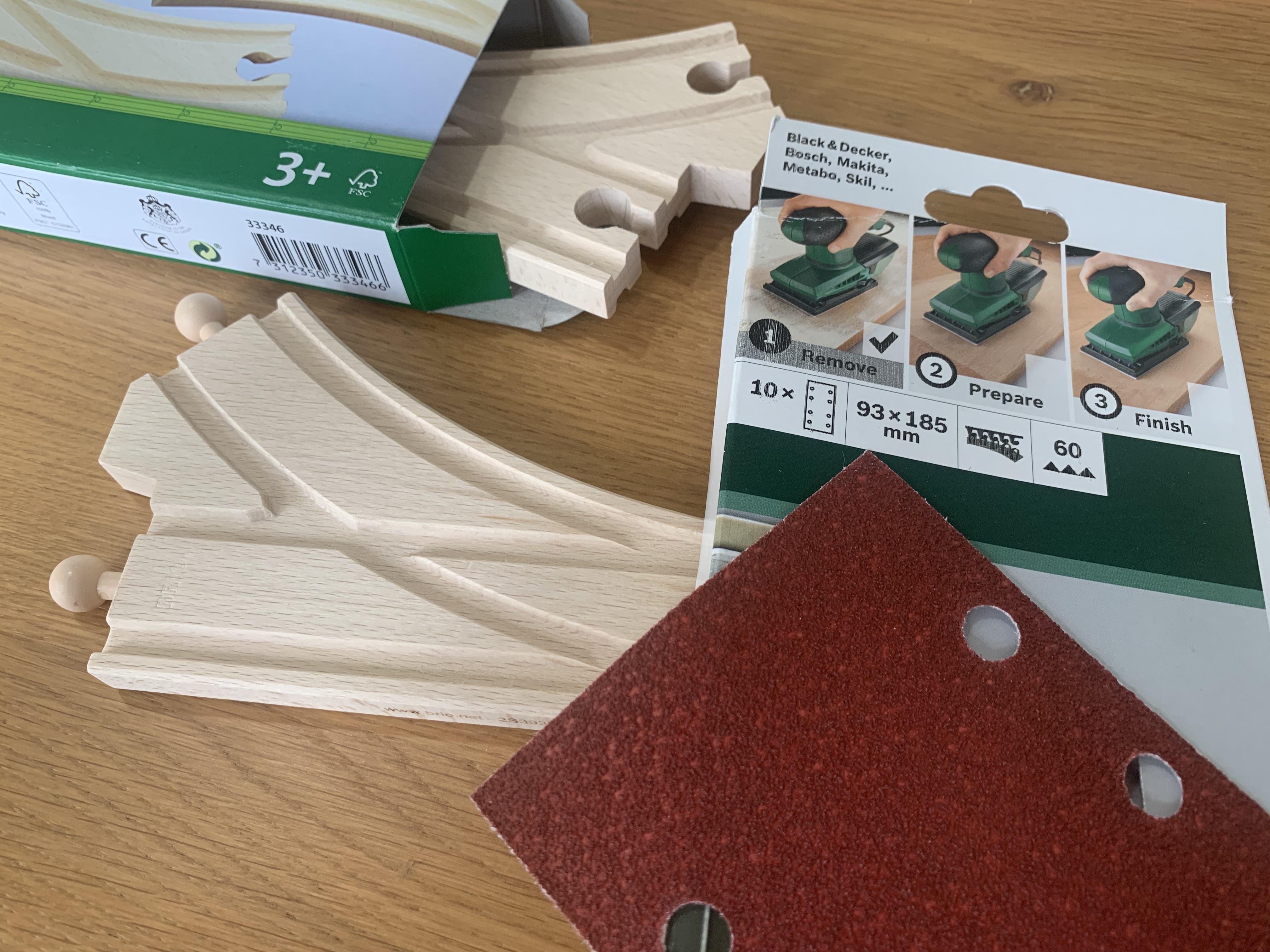BRIO track is made from beech wood. A very hard woord that lets them mill very sharp edges that won't chip. This makes their switches look good, as the bits in which the track diverges from the main will look very meticulously cut out from the wood. Nice and sharp.
Unfortunately we're not talking about real trains that have to take the switch, we're talking about children's toys. There is also no actual "switch" happening, there are no switch rails and no switch rods moving them into position. That means the cars just follow the path of least resistance.
The problem with BRIO's switches is that their closure rails start too soon. It looks hella good and it's some fine factory-milled wood... but cars, following the path of least resistance... are very often still going straight and haven't been pulled yet into the direction of the switch. And thus they get stuck behind the other side of the closure rail.

The picture here shows a train that will derail, its two cars' wheels are both on different sides of the closure rail. There is no way the car will be pulled "over" the rail and fall into the right groove of the track.
The solution is to have the closure rail start later. This gives the car that's being pulled to the side a bit more time for its wheels to start going into the direction of the switch before the closure rail starts.
Now I regret not buying that dremel when the shops were still open. I'm writing this during the 2020 coronavirus lockdown and all stores are closed. Luckily I had some sandpaper in the basement, for removal and finishing. I only ended up using the removal one. I took a new pack of Curved Switching Tracks that BRIO had sent me for free, but that's another story, and started filing away.

After some time I ended up with a switch on which trains would derail far less often. It was a very noticeable improvement. When I have a dremel I'll cut away some more maybe. Here's the final photo comparing the sanded switch to an untouched one.

Granted, it looks less "sharp", but it does work a lot better. BRIO surely knows this too so I don't understand why they haven't made their switches better yet.
In any case, if you want to help out your kids and see less frustration when their trains need to go through switches... sand away the start of the closure rails.